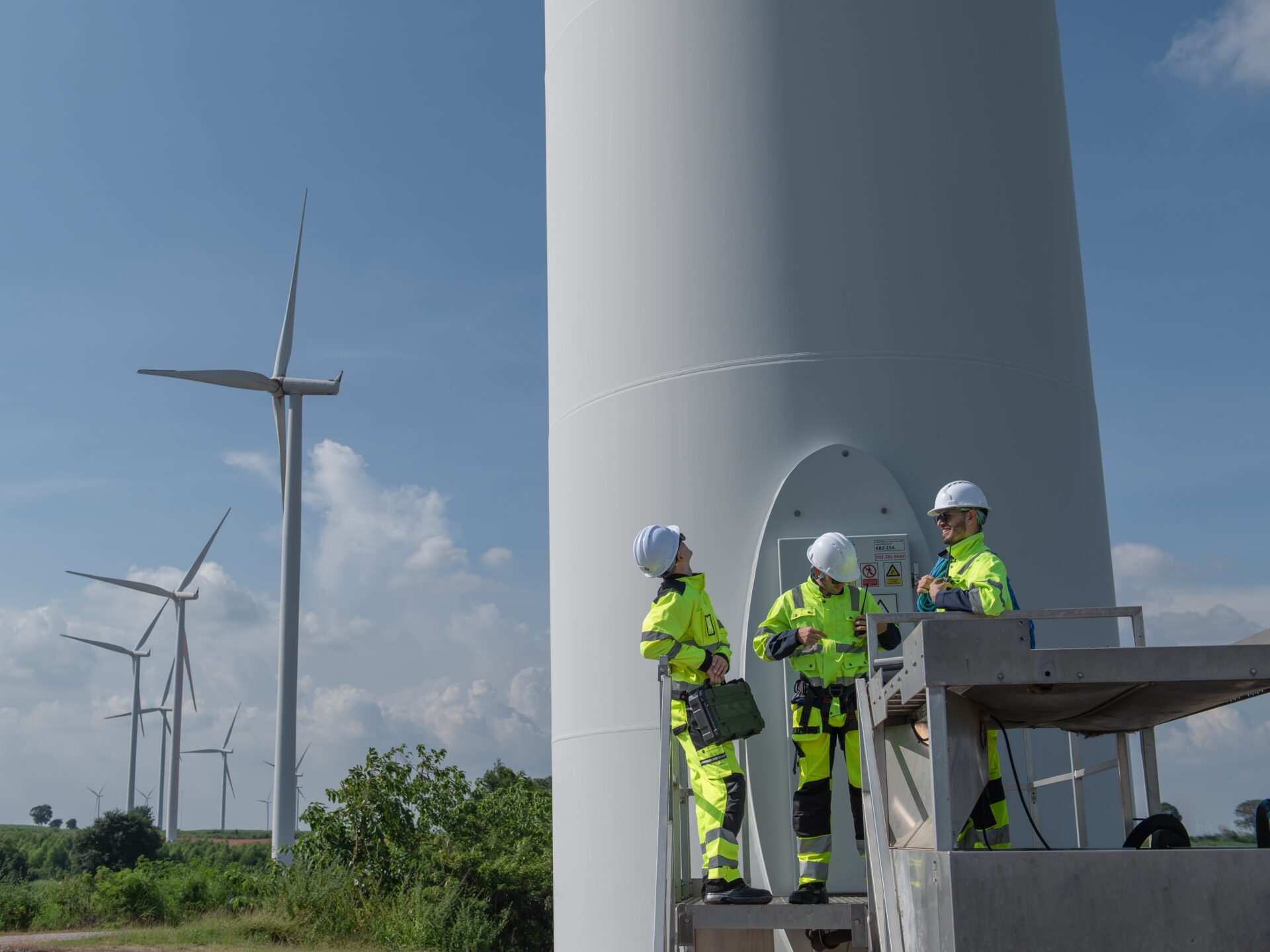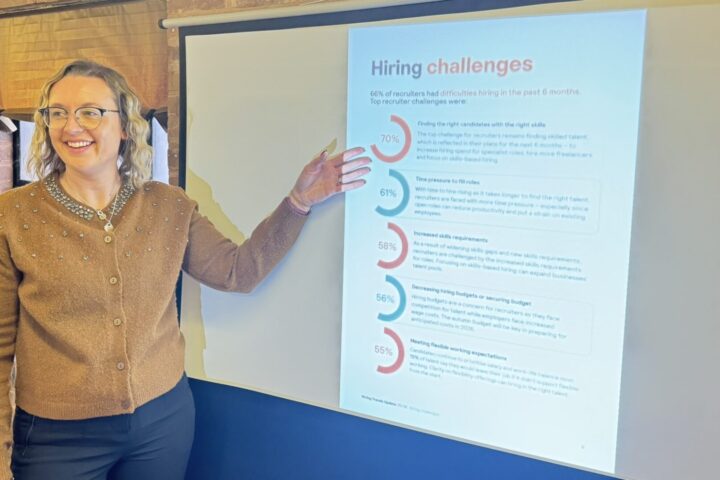Wind industry jobs in the UK have reached over 55,000, according to a report from RenewableUK and the Offshore Wind Industry Council (OWIC).
Out of this, nearly 40,000 people now work in offshore wind, up 24% from just over 32,000 two years ago.
Onshore wind employs just over 15,000 people.
The report looked at future job numbers based on different deployment scenarios for 2030.
For offshore wind, between 74,000 and 95,000 workers will be needed depending on how much capacity is built.
Onshore wind roles are expected to rise to over 17,500.
In total, more than 112,000 people could be working in the UK wind industry by 2030.
Most new jobs are expected in Scotland, the East of England, Yorkshire and the Humber.
The research also identified skills gaps in roles including high voltage cable specialist, wind turbine technician, environmental adviser, installation engineer, planning officer and technical manager.
It pointed to opportunities for workers to switch from oil and gas or the armed forces to renewables.
Additionally, the report recommended a national workforce strategy, regional training hubs, a central workforce data observatory and better alignment between science, technology, engineering and maths (STEM) education and industry needs.
The percentage of women working in wind has risen every year since 2022, now at 22%.
Offshore wind has a target of 33% by 2030.
The average age of workers in the industry is under 40.
Jane Cooper, deputy CEO at RenewableUK, said: “This report shows that the number of people working in high quality well-paid jobs in the wind industry onshore and offshore is set to grow even higher over the next five years, well beyond the 55,000 employed today.
“But it also identifies a looming skills gap which we have to address by recruiting and training enough workers to take on a wide variety of new roles in renewables though technical apprenticeships and graduate training programmes.
“Industry and Government both have roles to play in ensuring that we enable experienced workers from other sectors with transferable skills to retrain so that they have a clear career pathway into renewables.”
Cooper added: “We also need to foster young talent and inspire the next generation of engineers, designers, technicians and project managers to build the clean energy system of the future.”
Energy Minister Michael Shanks said: “This report highlights exactly how the clean energy transition is the economic opportunity of the 21st century.
“Delivering the Plan for Change means winning the race for the clean energy jobs of the future, which will drive growth and help us reach clean power by 2030.
“That is why this Government is doubling down on our clean energy superpower mission – driving economic growth, good jobs and investment across the country.”
Industry co-chair of the Offshore Wind Industry Council Richard Sandford said: “To help achieve both the Government’s ambitions for economic growth and clean power, the focus must be on sectors with a clear opportunity to secure new jobs and investment.
“The offshore wind industry is a fantastic opportunity for the UK—not just to build crucial clean energy projects and create new supply chains, but to export our products and expertise worldwide as we are a recognised global leader in this technology.
“Crucially, this report contains key recommendations to attract the tens of thousands of new workers of all ages and from all backgrounds we need to maximise our success in the years ahead.”
OWIC skills sponsor Zoe Keeton, head of stakeholders and local markets UK and Ireland at RWE, said: “This report shows what a catalyst the wind sector can be for high quality jobs – typically paying £10,000 a year more than the UK average salary – in coastal and rural communities right across the country.
“Our analysis shows that two regions in Scotland, Aberdeen and the North East followed by the Highlands and Islands, are expected to require the highest number of workers with the East of England and Yorkshire and the Humber closely behind.
“Crucially our sector offers opportunities now and well into the future both for young people leaving school, college and university as well as career switchers looking for a rewarding career in renewable energy.”















